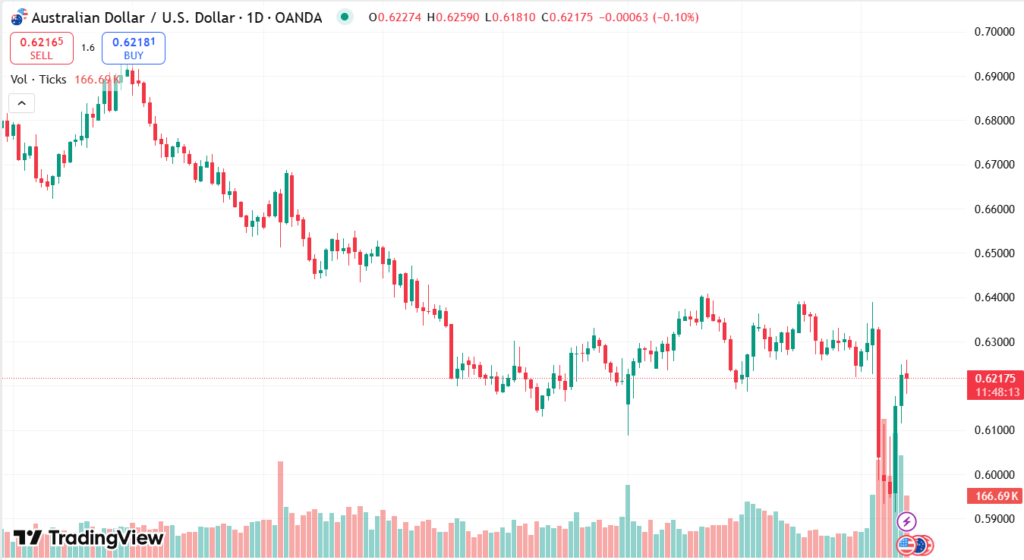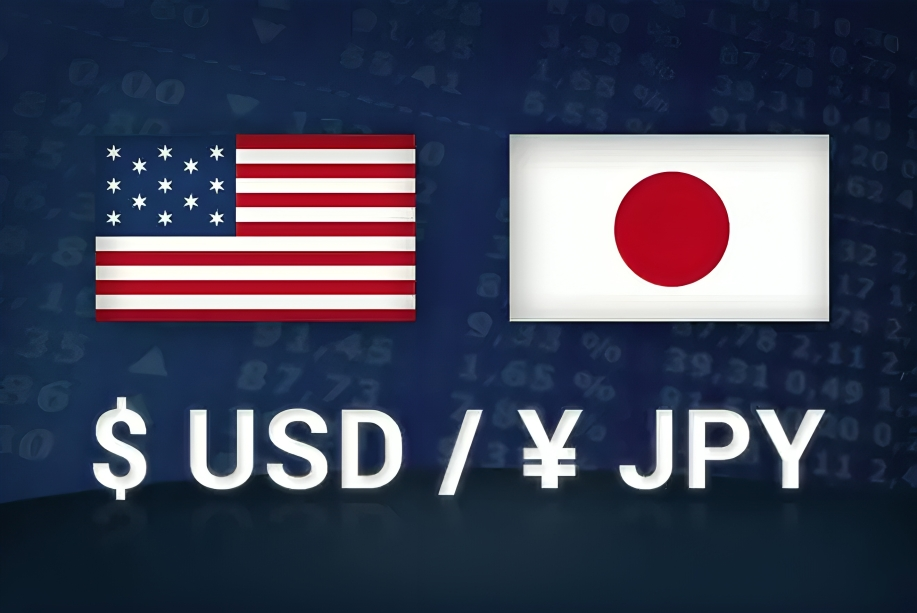The Australian Dollar (AUD) continues to be under pressure as rising US-China trade tensions and soft global economic signals continue to bear down on investor sentiment. The White House confirmation that US tariffs on Chinese imports have risen to 145% has further fueled risk aversion, hurting the AUD because of Australia’s high trade exposure with China. Although the AUD was given temporary support by reports of renewed trade talks with the European Union, subdued local sentiment and forecasts of Reserve Bank of Australia interest rate cuts still weigh on its outlook. The US Dollar also has headwinds to contend with from softening inflation and general doubts regarding economic growth, keeping the AUD/USD currency pair highly volatile around significant technical levels.
KEY LOOKOUTS
• The series of ongoing tariffs increases and trade barriers between the US and China remains a major threat to the Australian Dollar, as Australia has close trade connections with China.
• Markets are factoring in as much as 100 basis points of rate cuts by the Reserve Bank of Australia from May, which has the potential to put additional pressure on the AUD if it materializes.
• The US Producer Price Index (PPI) and Michigan Consumer Sentiment figures will determine USD strength and, consequently, the AUD/USD exchange rate.
• The AUD/USD is trading around 0.6190, supported by the 9-day EMA (0.6167) and capped by the 50-day EMA (0.6260). A break in either direction may determine the short-term trend.

Investors are scrutinizing closely a handful of important variables that have the potential to define the near-term path of the Australian Dollar. The escalating US-China trade war, characterized by high tariff increases and retaliatory actions, remains a strong burden on the AUD because of Australia’s trade reliance on China. Simultaneously, rate cut expectations from the Reserve Bank of Australia are contributing to the currency’s negative outlook, with markets predicting a dovish turn as soon as May. Globally, focus shifts to coming US economic data such as the PPI and consumer sentiment figures that could drive the US Dollar and in turn the AUD/USD. Technically, the pair’s position close to key moving averages implies volatility in the offing with support at 0.6167 and resistance around 0.6260 set to dictate market direction.
The Australian Dollar is under downward pressure due to heightened US-China trade tensions and RBA rate-cut expectations. Market direction in the near term is sought by traders in terms of key US economic statistics and technical thresholds at 0.6167 and 0.6260.
• The US imposed additional tariffs of 145% on Chinese products, fueling the trade war and affecting global trade patterns.
• Australia’s strong trade relationship with China exposes its economy and currency to being affected by disruption in China’s trade landscape.
• China responded by boosting tariffs on 84% of US imports and blacklisting six US firms, ratcheting up trade tensions.
• Australia will resume trade talks with the European Union with the objective of deepening and diversifying its trade relationships.
• China showed interest in further developing trade and investment relationships with the EU as it pursues stability against increasing US tensions.
• Sluggish consumer and business confidence is driving anticipation of a dovish move from the Reserve Bank of Australia.
• Easing inflation and mixed economic data in the US are contributing to uncertainty and conservative market sentiment on the global stage.
The Australian Dollar is under sustained pressure as tensions in international trade rise, especially between China and the United States. The announcement by the White House that US tariffs on Chinese exports have risen to 145% has increased anxiety on international trade stability. The issue is particularly pertinent for Australia, considering that it has strong economic relations with China. The ongoing conflict instills apprehension about diminished demand for Australian exports, leading to a conservative outlook for the currency.
AUD/USD DAILY PRICE CHART

CHART SOURCE: TradingView
Domestically, Australian consumer and business confidence is underpinned by weak sentiment, which supports the view that the Reserve Bank of Australia might pursue a more dovish monetary policy stance in the months ahead. In the US, meanwhile, inflation data provided indicators that eased, while policymakers there are also watchful about striking a balance between growth and price stability. As global and local uncertainties are played out, markets will be keeping a keen eye on economic resilience signs and central bank policy reactions globally.
TECHNICAL ANALYSIS
The AUD/USD pair is trading close to 0.6190 with limited momentum as it continues to range about vital short-term moving averages. While the pair had a momentary respite, indicators point to the fact that market sentiment is still guarded. The Relative Strength Index (RSI) is languishing beneath the neutral 50 mark, signaling that there is no strong bullish sentiment. A protracted move in either direction might determine the direction for the next leg, with traders keeping a close eye on confirmation signs from wider market indicators and economic data.

FORECAST
Australian Dollar might get some support if Australia can restart trade talks with the European Union successfully, which would be a possible investment sentiment booster. Encouraging trends in China’s bid to increase trade with the EU could also calm regional trade sentiment, positively affecting the AUD indirectly. In addition, if US economic releases later this week fail to impress or if the Federal Reserve provides hints of a more conservative strategy in tightening, the US Dollar could lose strength, allowing space for a slight rebound in the AUD/USD pair.
The Australian Dollar could experience more downward pressure in the short term because of the increasing tensions between China and the US, which threaten Australia’s export-oriented economy. With China raising tariffs on US products and blacklisting US businesses, the uncertainty in global trade could limit demand for Australian commodities. Moreover, poor local sentiment and increased expectations of rate cuts by the Reserve Bank of Australia may add to the drag on the AUD, leaving it exposed to falling if global risk aversion continues to intensify.







